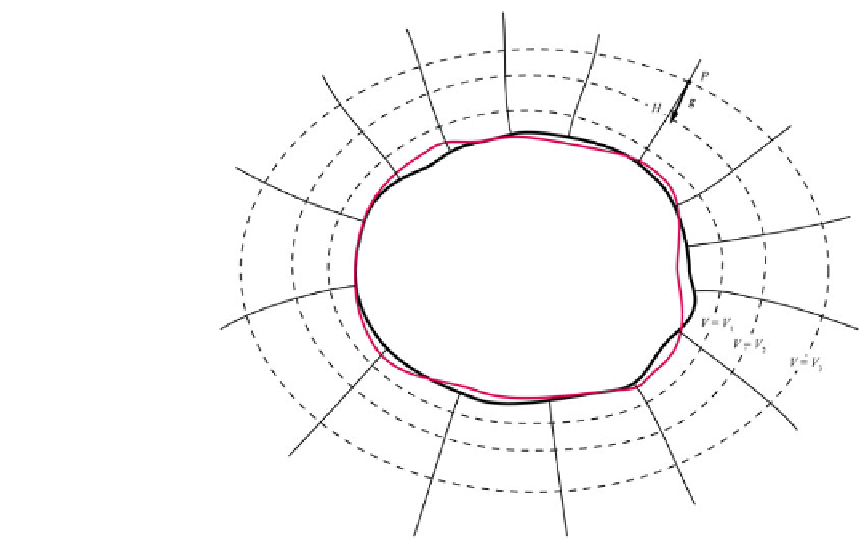Geology Reference
In-Depth Information
Fig. 14.1
Geoid (
thick
black line
), topography
(
red line
), plumb lines (
thin
black lines
), and level
surfaces of the gravity
potential (
dashed lines
).
H
is the orthometric height of
a point
P
A simple method for describing the geometry of
the Earth's geoid is to specify its undulations
with respect to a reference regular surface that
would represent the overall shape of the Earth
in absence of lateral density variations. To a
first approximation, the Earth and other planetary
bodies are rigid rotating objects having spherical
symmetry. The main factor controlling the depar-
ture from spherical symmetry of a homogeneous
deformable body that is rotating about a spin
axis is the combined effect of the gravity field
and the centrifugal force. Let us start from a
homogeneous body that is at rest in an inertial
reference frame. The equilibrium shape of this
body is a sphere of radius
R
, and its gravity
potential for
r
R
is given by:
subject to the combined effect of the gravity force
g
and the centrifugal force
f
c
:
f .r/
D
g.r/
C
f
c
.r/
D
g.r/
.
r/
(14.20)
where
D
n
. This force depends from the co-
latitude through a factor sin™, thereby the surface
of the body is not anymore an equipotential sur-
face. Consequently, the body will start deforming
to adapt its shape to the new level surfaces.
For
r
D
R
, the potential
U
associated with the
force field (
14.20
) is initially given by the sum
of the gravity potential,
V
0
(
R
) plus the potential
associated with the centrifugal force,
W
(™):
GM
R
C
1
2
2
R
2
sin
2
™
U.™/
D
V
0
.R/
C
W.™/
D
GM
r
GM
R
1
3
2
R
2
ŒP
2
.cos™/
1
V
0
.r/
D
(14.19)
D
(14.21)
Now let us assume that this body is put in
motion instantaneously, and that this motion con-
sists of a rotation about a fixed spin axis
n
with
constant angular velocity . In this instance, a
test unit mass at the surface of the body would be
This expression suggests the shape that the
body should acquire to adapt its surface to
an equipotential surface of the combined field
(
14.20
). In fact, by (
14.21
)wehavethat:


